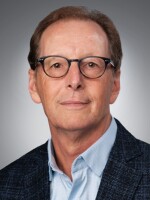A group of students from SUNY Environmental Science and Forestry won a national competition for designing a solar powered structure with cutting edge construction techniques. Their project could help solve several other problems Syracuse faces as well.
The property that focused on on East Adams Street, just West of I-81 sits at an intersection of poverty, and what’s been described as a racial divide, exacerbated by the highway. So what does it have to do with a competition about solar power and construction? Well E-S-F Junior Noah Townsend wanted their project to be truly valuable to improving the area.
“The largest challenge facing Syracuse, New York right now is economic disparity. So we chose to design our building to fix some of those problems. So we designed a mixed-use, mixed-income, multi-family building in the East Adams Street neighborhood which is historically sanctioned off from the rest of the area by I-81. And so we made sure to think about all the little things in the design to promote a healthy lifestyle.”
Junior Michael Schmidt was also one of the project leaders … and also wanted more out of the experience than just the technical exercise.
“Rather than just designing a building, we could design anything we like, but if it’s not going to fit into the community or impact the community in positive ways, why do it at all? So I think that was perhaps the best part of the experience for me..”
Their design was entered into a competition of the National Renewable Energy Laboratory in Boulder Colorado.
Noah Townsend explains it’s called the Solar decathlon, ten design criteria, including things such as “energy efficiency, engineering, financial feasibility, presentation, architecture, indoor air quality …“ and more.

The building plans include solar power, charging for electric vehicles and other features that Ryan Badke, who was in charge of the solar engineering, explains were only part of the design.
On our roof we’re also going to have a 70 kw roof-mounted (solar) array. Together they’ll all produce 335,000 kw/hours a year that can be used in our building and the surrounding community that will ensure the community’s using renewable energy, rather than energy from fossil fuels. Our carport is also functioning as a rainwater collection system. A big problem is water, in times of high flow, the combined sewer will reject the excess into Onondaga Lake. When it rains, the rain that hits the panels will then be collected and rejected into a rain garden on our site.”
One of the chief goals behind the competition’s solar design is to combat climate change through advanced construction and energy methods. That ethic, Michael Schmidt adds, fueled the hundreds of hours and dozens of presentations they went through.
“We were very cognizant of the environmental issues that are facing the world right now. And part of that, so 40% of greenhouse gas emissions are from buildings and the building sector. That’s a larger portion that agriculture, larger than transportation, in order tackle that, building a net-zero design fits directly into the future of the world. I think that was a big draw to the project as well.”

The project team included 18 E-S-F students and 4 from Syracuse University. Assistant Professor of Construction Management Dr. Paul Crovella says this kind of project, with strict guidelines and real-world requirements, is just the challenge students want.
“Those criteria, and the responsibility given to the students to design this building and see it through, I think is something students are dying to do. Students can come to our class; I can give them a homework assignment; they can do a bunch of calculations and throw the sheet in. But actually telling the students ‘we’re ready to hand-off the future to you and you need to show that you’re ready to take it in the right direction,’ is something that we as educators need to do for our students.”
He explains, they self-organized, held each other accountable, held weekly meetings that could last 6 to 8 hours, and involved numerous professional partners and advisors. Ryan Badke thought the presentation itself added to the experience as they all look to their futures.
It was great to get in front of a professional audience. We had a lot of practice and we felt we were very prepared for the competition and the judges definitely noticed that. A little networking skills, the soft skills, this project encompassed everything I’ll use in my career and prepared me for every aspect of things that I was kind of lacking in before.”
One of their expert partners in the community was the Syracuse Housing Authority, which owns this land. And not only does this project address a range of environmental and social problems, it’s also economically and technically feasible. Since an energy efficient, multi-family, mixed use building fits with their goals, The Housing Agency is looking into perhaps building it – which would be a bigger trophy – both literally and figuratively – than anything the team brought home from Colorado.



